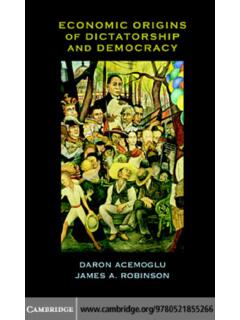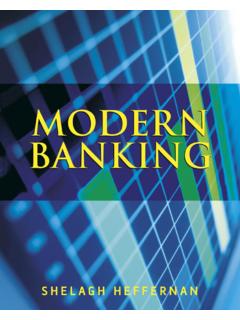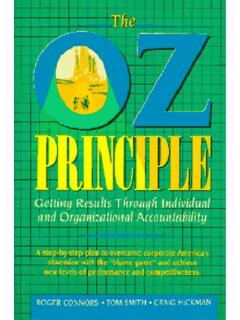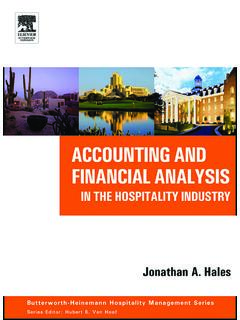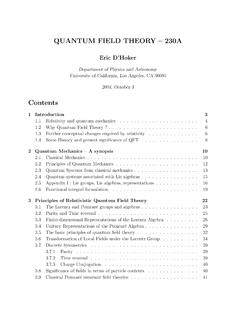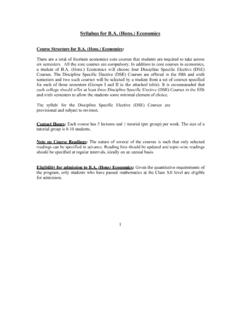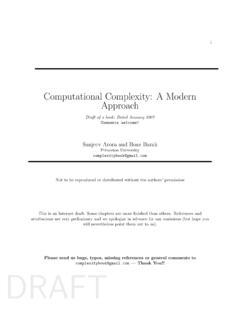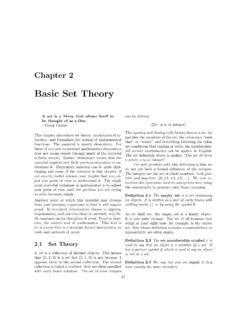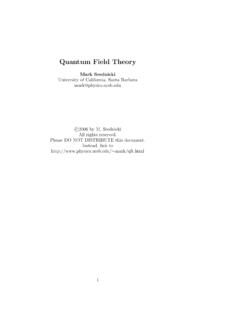Transcription of Lectures on Corporate Finance - untag-smd.ac.id
1 Lectures ON Corporate Finance Second Edition Peter Bossaerts Bernt Arne 0degaard Lectures ON Corporate Finance Second Edition This page is intentionally left blank%Y\ Lectures ON Corporate Finance Second Edition Peter Bossaerts California institute of Technology & Center for Economic Policy Research, USA Bernt Arne 0degaard Bl Norwegian School of Management, Norway l||p World Scientific NEW JERSEY LONDON SINGAPORE BEIJING SHANGHAI HONG KONG TAIPEI CHENNAI Published by World Scientific Publishing Co. Pte. Ltd. 5 Toh Tuck Link, Singapore 596224 USA office: 27 Warren Street, Suite 401-402, Hackensack, NJ 07601 UK office: 57 Shelton Street, Covent Garden, London WC2H 9HE Library of Congress Cataloging-in-Publication Data Bossaerts, Peter L.
2 , 1960- Lectures on Corporate Finance / by Peter Bossaerts & Bernt Arne 0degaard. 2nd ed. p. cm. Includes bibliographical references and index. ISBN 981-256-899-9 1. Corporations- Finance . I. 0degaard, Bernt Arne. II. Title. 2006 2006041357 British Library Cataloguing-in-Publication Data A catalogue record for this book is available from the British Library. Copyright 2006 by World Scientific Publishing Co. Pte. Ltd. All rights reserved. This book, or parts thereof, may not be reproduced in any form or by any means, electronic or mechanical, including photocopying, recording or any information storage and retrieval system now known or to be invented, without written permission from the Publisher.
3 For photocopying of material in this volume, please pay a copying fee through the Copyright Clearance Center, Inc., 222 Rosewood Drive, Danvers, MA 01923, USA. In this case permission to photocopy is not required from the publisher. Printed in Singapore by Mainland Press To Betty, Majanka and Prederik PB. To Ingeborg Helene and Arne Tobias BA0. This page is intentionally left blankIntroductory Remarks Scope This course of Lectures introduces students to elementary concepts of Corporate Finance using a more systematic approach than is generally found in other text-books. Axioms are first highlighted and the implications of these important con-cepts studied afterwards.
4 These impUcations are used to answer questions about Corporate Finance , including issues related to derivatives pricing, state-price prob-abilities, dynamic hedging, dividends, capital structure decisions, and risk and incentive management. The main thing to note about this book compared to more standard texts in Corporate Finance is the level of abstraction. We are arguing in an abstract manner to make the unifying themes, represented by the axioms, clear. But this does not mean that we are using advanced mathematics. While we are not afraid of using mathematical expressions where it will simplify understanding, the emphasis is on basic algebra.
5 No advanced calculus or stochastic processes is used. We provide an extensive set of examples in this book. Most of them are relatively simplistic, they are used to clarify a single point. We are on purpose not trying to be encyclopedic in our coverage of Finance . This book is mainly on principles, little about the nitty-gritty of institutions, in which many Finance text abounds. In order to understand the concepts in this book it is essential to work with numerical problems. End of chapter problems are provided for most chapters. Each problem has an indicated level of difficulty, ranking from 1 (simple) to 10 (very hard).
6 If there is a lot of work involved with a problem, this will also push it up the scale. vii viii introductory Remarks Acknowledgment Numerous students have gone through the first edition of the book, and we owe much to them for pointing out typos and suggesting improvements in the expo-sition. We would also like to thank Steinar Ekern for his constructive criticism of our handling of capital budgeting under CAPM, and Chester Spatt for sug-gesting a simple example that illustrates the power of the usage of state price probabilities. A Roadmap (Where are we going?) introductory chapters, setting the stage.
7 We present some of the "axioms" that we rely on in the later analysis. Like all axioms, they sound reasonable. "Axioms" of Modern Corporate Finance . On Value Additivity. The Finance equivalent of Lavoisier's law. An implication: The value of a firm. On The Efiicient Markets Hypothesis. Loosely stated, it claims that securities prices should not be "too" pre-dictable, because otherwise there is money on the table. Basics chapters, covered in all Finance books. Present Value. Prices of future cash flows are expressed in terms of interest rates. To value a stream of cash flows, you "discount" using these interest rates.
8 The terminology is strange, but the principles are no different from what grocery stores use. Competing Valuation Methods. People have been proposing lots of alternative valuation methods, some of which are merely restatements of standard present value analysis, oth-ers deliver investment decisions that range from sometimes the same (as present value) to always incorrect, at least if you buy the axioms of modern Corporate Finance . Valuation Under Uncertainty: The CAPM. One popular way to distinguish between classes of risky future cash flows is to compute "betas" (covariances with the market portfolio).
9 Cashflows get introductory Remarks ix discounted on the basis of a class-specific, risk-adjusted discount rate. The idea comes from a simple, intuitively appealing, equilibrium asset pricing model, the Capital Asset Pricing Model (CAPM). Even far more elaborate (and realistic) models basically deliver the same insights as the CAPM, namely that only covariance with "aggregate risk" is priced. To put it differently: one is not rewarded for all the uncertainty that an investment project or security carries, only the "systematic" uncertainty. Multiperiod pricing and derivatives. Valuing dated, risky cash flows based on an enumeration of states.
10 The CAPM or APT does not work well to value such cash flows, because they are not symmetric in good and bad states. So, we need a novel ap-proach. The valuation approach for this part is incredibly simple. We divide the world into possible future "states." We then price cash flows in each state separately, using "state-price probabilities," before we add everything to-gether, using the axiom of value additivity. Basics of derivatives. We will start with some basic facts about the quintessential derivative prod-ucts, call and put options. Valuing derivatives Many cash flows derive from the future value of some underlying asset, and, hence are really derivative products.


